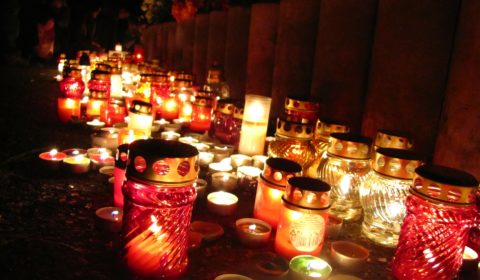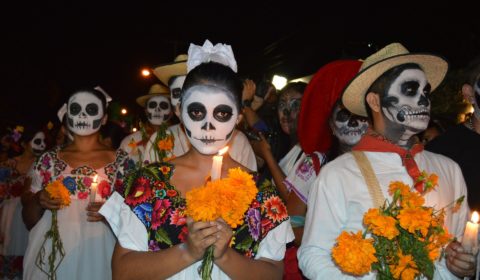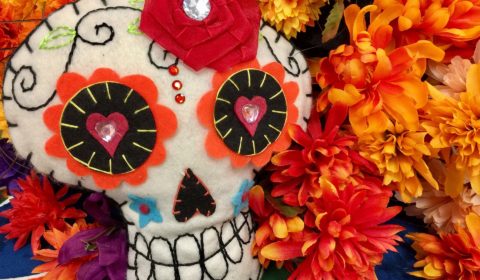
We have reached Halloween. We’ve gone through vampires, werewolves, ghosts and witches and anthropological debate to do it, but here it is, and I hope you have a nice evening planned. Mine is going to be very feline (how witchy of me…;) ), with my partner and myself and our nine felines watching a film, because sometimes, it’s good to just curl up and cuddle and watch something. Will it be Halloween themed? Perhaps. Or maybe it will be something else, so that we stop working for once (sometimes, certain films make you think professionally a lot more than other).
We have already said a lot about Halloween, of what it is and what it used to be. So perhaps, today, just a short study of a festival to keep you cheery until the evening.
Because I have tormented you (and myself; I am not a Celtic specialist, and you can’t BELIEVE the number of tear-jerking issues with finding references and sources I went through… sometimes, you remember hearing something or reading something academic many years ago, and you a) can’t remember when, where or how, or b) come across the source and realise it was BIASED (yes, it makes you die just a little bit every time 🙂 ) or you realise that c) ain’t nobody know what they’re talking about (which happens in the academic world quite a lot too, because we are all just people, with our own limitations… including not ever being able to read up on everything on the topic; sometimes, information hides in the least likely places).
So, to heal my now aching heart (lol, just kidding…), let’s look at the best part of anthropology, observation. Case study : Day of the Dead in Mexico.

El Dia de los Muertos is, and I did not know that until today, on the UNESCO list of cultural heritage. It is a fabulous day, very colourful, and a beautiful show of syncretism.
Traditionally both a festival of the end of maize cultivation and the return of the spirits into this world – already a combination of some older European ideas that have been connected to Samhain (such as the harvest end and start of winter, plus the spirits returning) and the local crop cultivation -, it all starts by inviting the dead to come visit their home again. Petals are strewn on the paths that lead home, together with candles (mini fires, plus the Catholic symbol of eternal life) and offerings; favourite foods are prepared. This is the exact opposite of the beliefs I have heard of in Scotland, where, after a funeral, the family takes great care to avoid going home by the usual route, lest the spirit should follow them home. It would be interesting to know whether such a belief exists in Mexico as well for the day of the funeral, as it would definitely signify a finality of passing with one ritual and the welcoming of memory with the other.
There is a duality definitely present, with the dead being capable of bringing good fortune or misfortune if offended, joining the ancestor worship with deity worship, as well as the worship of the replaced gods… this is often the case where one religion replaces another, or perhaps a third one along the way, that had replaced the one the new had replaced before, and a ritual is formed in some way to still appease the replaced god or gods from before. I imagine there must be many more religions involved than we often think; if you consider, just very simply, the spread of Roman culture in Europe, Africa and East, and how many religions, gods, and versions of both they knew and how differently they often practiced, it would be easy to see that say, a version of a Roman cult would slowly replace a (for example) Celtic deity somewhere, and that then later, the Christianity spread would replace both, or rather, would become the dominant religion while the other two, each in its place, would retain some presence in local lives, as well as become further syncretised into the daily lives of the people.

Anyhow, on we go. The Mexicans seem to place a lot of importance to the social aspects of each of their dead (giving me, incidentally, a brilliant example of showing you how the SCR works – the Social aspect of the person within the Cultural aspect of tradition and social hierarchy which has Religious meaning that underlines, co-creates and supports and is supported by both S and C); cause of death seems to be equally important, bringing to mind stories about the Arab fear of the dead that died a violent death (cf. ifrit or afreet).
Interestingly, the festival has both a domestic aspect and the graveyard aspect to itself – so public and private, living and dead, new and old, continuity and finality, all brought into one gorgeous mix. The probably most well known aspect of the festival must be the sweets – skulls, skeletons and other visual reminders of death are made and are eaten by the family and left for the dead, again in a form of ritual of sharing.
That the festival goes back to the Native beliefs in part is definite; in a way, all peoples have very similar ways of recognising and dealing with various challenges and occurrences in their world, and this similarity has to do with our psychology – we are only as different as our situation and the indoctrinated or inculturated (I use my own meaning for inculturated, because it was necessary to develop an easy and understandable opposite to the rigid to illustrate their fluid opposition; so I recycle the word inculturation to show a capability to act within a multiple-culture influenced world with an accepting manner, picking the aspects of each culture as we desire rather than either clinging to a set of pre-set rules or assimilating elements of other cultures quietly and then claiming them as our own, destroying everyone in our path who could form objection) make us.
How widely the festival was observed before it was made into the national holiday by the government in 1960s (according to one source and after having looked through articles in Spanish 🙂 ) is hard to say, as two problems need to be considered.
One, the many peoples, native and otherwise, of the Latin and Mesoamericas, had different festivals and different beliefs.
Two, anything potentially too pagan and too syncretic (too visibly syncretic might be the better phrase, or too newly syncretic) would have been shunned by both the community and the Catholic church, which, you must not forget, had Spanish roots, which had, by the time of European colonisation of Americas, seen Torquemada and the Inquisition and a rigidity of belief so intense it could possibly have been the worst (or at least one of the worst) in the history of this particular religion. But if there’s one thing that is difficult to completely escape is syncretism; it could be said that syncretism forms a slow precursor to inculturation as rigidity is slowly chipped away, provided a fluid enough perception is possible within the environment that is doing it, and a clear knowledge of where something comes from remains. In either case, this would make a very interesting anthropological debate.
Like other festivals around the world, the origins, practice and local meaning of the Day of the Dead are subject to a lot of various presentations and perspectives. As we anthropologists as social and cultural scientists technically gather information from people directly, and a search for an ultimate “truth” about a festivity or way of life is, in a way, a fruitless attempt, because if anthropology is a study of people, then the festivity or behaviour in question is valid insofar as we recognise that it may only be observed, in the way presented, by our particular informants, it may be useful to observe that ALL information is valid to some extent, if it pertains to a behaviour observed; the only time where a search of a certain amount of truth or validity must be observed is where we are studying history, and past festivities or behaviours, which may have been “kidnapped” by others to illustrate a point of THEIR behaviour or beliefs. Criminal cases, too, must be subject to this rule.
So I leave you with this to consider. If we take observation as only partially true, because we can never observe everything and everyone; it we take all information received as only true as far as our informants are fully aware of a meaning, even personal, of that information for themselves, and perhaps at least a part of the social, cultural, traditional etc. aspect of their environment; if we take written sources and material culture interpretations carefully and with a goodly amount of doubt, at least until we have confirmed or refuted them as much as possible, then we are left, very fittingly for Halloween, in a world where anything goes and nothing does; where anything is possible and everything is impossible at the same time.
Duality is a part of life; it is a part of the everlasting conflict of the what ifs that form our decisions and influence our survival. Any decision can lead to any ending; dark and light, to put this into festival appropriate words, are a part of who we are, regardless of whether we are considering maladaptive or bio-normal behaviour. Rigidity simply takes the bio-normality and creates a ritual out of observation, removes decision and replaces it with a dogma. Maladaptive is simply a twisted form of bio-normality, and we should never forget that. In anthropology, we always stand between the people functioning within their environment because to survive, one must function, just like a captive may Stockholm to survive and, in a twisted way, remain somewhat sane, and the actually functional environment without pressure. It is important to remember that, and to observe just how intricately things can become obscure before we make a bid for interpretation. I hope that the last few posts illustrated that for you. 🙂 Happy Halloween, however you choose to celebrate (or not celebrate) it.

